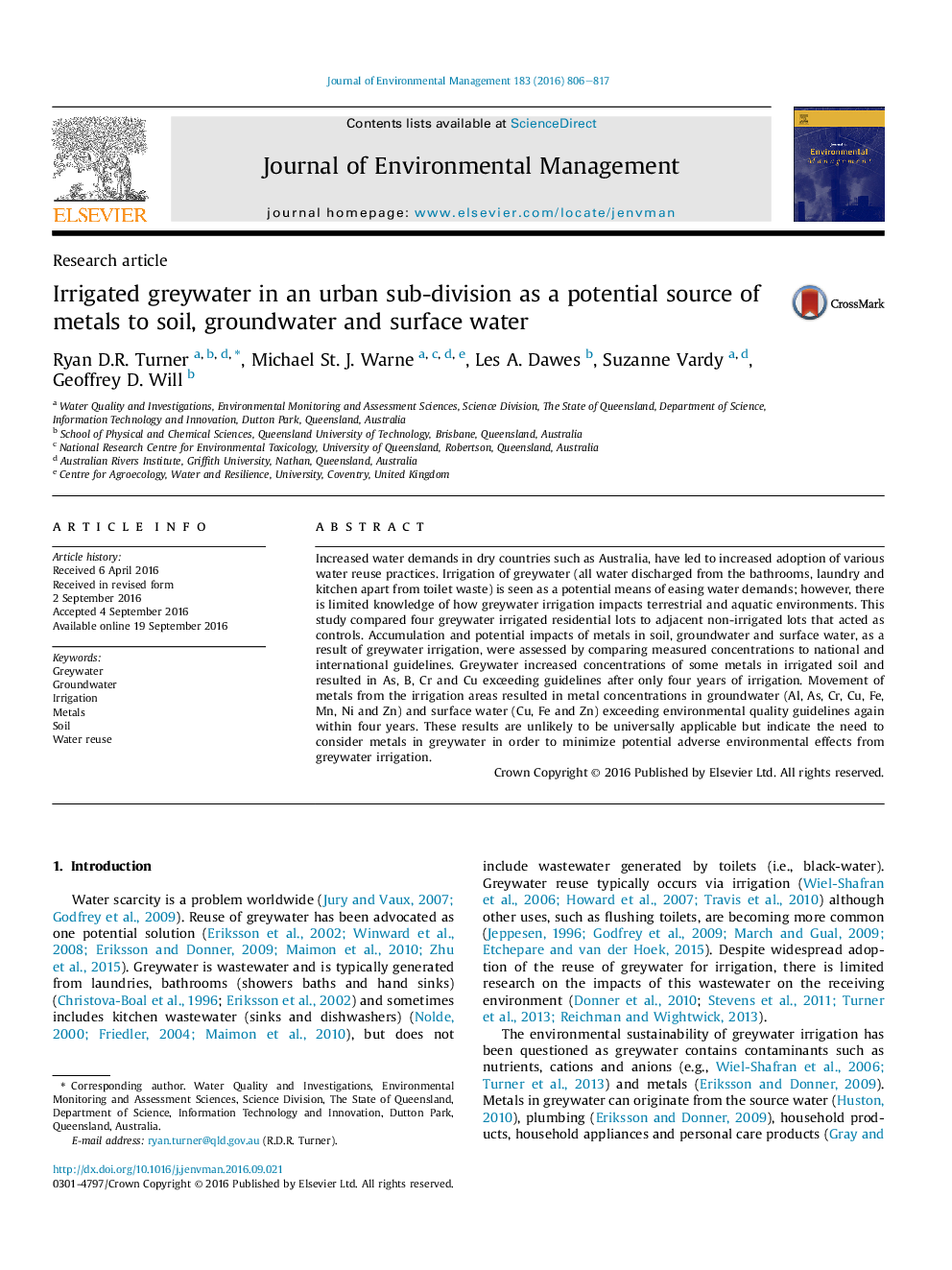| کد مقاله | کد نشریه | سال انتشار | مقاله انگلیسی | نسخه تمام متن |
|---|---|---|---|---|
| 5117218 | 1378118 | 2016 | 12 صفحه PDF | دانلود رایگان |
- Greywater irrigation resulted in As, B, Cr and Cu exceeding soil guidelines.
- Movement of irrigated metals resulted in the pollution of ground and surface waters.
- Groundwater metals exceeded water guidelines for Al, As, Cr, Cu, Fe, Mn, Ni and Zn.
- Surface water metals exceeded water guidelines for Cu, Fe and Zn.
Increased water demands in dry countries such as Australia, have led to increased adoption of various water reuse practices. Irrigation of greywater (all water discharged from the bathrooms, laundry and kitchen apart from toilet waste) is seen as a potential means of easing water demands; however, there is limited knowledge of how greywater irrigation impacts terrestrial and aquatic environments. This study compared four greywater irrigated residential lots to adjacent non-irrigated lots that acted as controls. Accumulation and potential impacts of metals in soil, groundwater and surface water, as a result of greywater irrigation, were assessed by comparing measured concentrations to national and international guidelines. Greywater increased concentrations of some metals in irrigated soil and resulted in As, B, Cr and Cu exceeding guidelines after only four years of irrigation. Movement of metals from the irrigation areas resulted in metal concentrations in groundwater (Al, As, Cr, Cu, Fe, Mn, Ni and Zn) and surface water (Cu, Fe and Zn) exceeding environmental quality guidelines again within four years. These results are unlikely to be universally applicable but indicate the need to consider metals in greywater in order to minimize potential adverse environmental effects from greywater irrigation.
Journal: Journal of Environmental Management - Volume 183, Part 3, 1 December 2016, Pages 806-817
